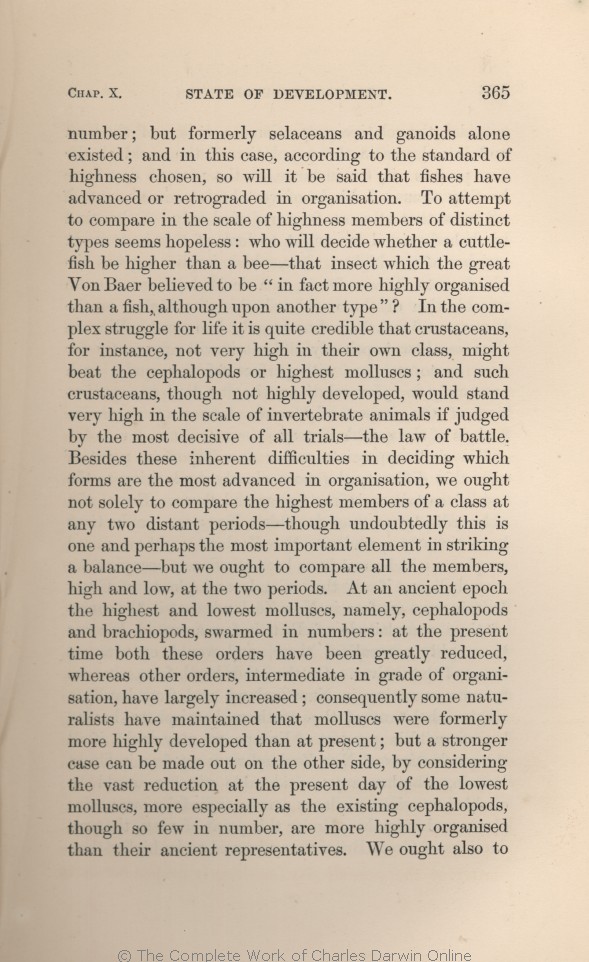number; but formerly selaceans and ganoids alone existed; and in this case, according to the standard of highness chosen, so will it be said that fishes have advanced or retrograded in organisation. To attempt to compare
in the scale of highness members of distinct types | in the scale of highness members of distinct types 1861 1866 1869 |
| members of distinct types in the scale of highness 1872 |
| seems 1861 1866 1872 | | seemed 1869 |
| hopeless: 1861 1866 1869 | | hopeless; 1872 |
| cuttlefish 1861 | | cuttle-fish 1866 1869 1872 |
| for instance, 1861 | for instance, 1866 1869 1872 |
| the 1861 | the 1866 1869 1872 |
| cephalopods 1861 | | cephalopods, 1866 1869 1872 |
| or 1861 | | the 1866 1869 1872 |
| molluscs; 1861 1869 1872 | | molluses; 1866 |
| animals 1861 1866 1869 | | animals, 1872 |
| distant 1861 1866 | distant 1869 1872 |
| molluscs, 1861 1869 | | molluses, 1866 | | molluscoidal animals, 1872 |
| numbers: 1861 1866 1869 | | numbers; 1872 |
| these orders have been 1861 1866 |
| orders are 1869 |
| groups are 1872 |
| whereas 1861 1866 | | whilst 1869 1872 |
| other 1861 1866 1869 | | others, 1872 |
| orders, 1861 1866 1869 | orders, 1872 |
| grade of 1861 1866 | grade of 1869 1872 |
| largely 1861 1869 1872 | | been largely 1866 |
| have 1861 1866 | have 1869 1872 |
| maintained 1861 1866 | | maintain 1869 1872 |
| molluscs 1861 1869 1872 | | molluses 1866 |
| other 1861 1866 | | opposite 1869 1872 |
| at the present day of the lowest molluscs, more especially as the 1861 |
| at the present day of the lowest molluses, more especially as the 1866 |
| of the lowest molluscs, and the fact that our 1869 |
| of brachiopods, and the fact that our 1872 |
|









